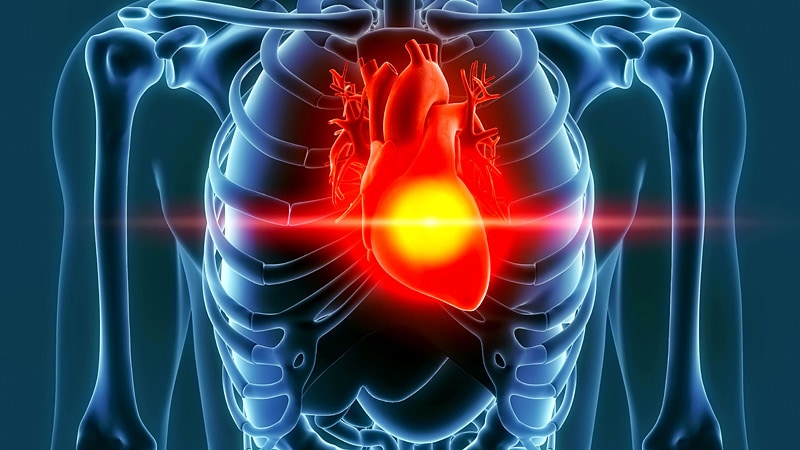Canadian Cardiovascular Society's Four-Stage Classification of Acute Myocardial Infarction
Core Concepts
Improved classification of acute myocardial infarction allows for better risk stratification and tailored treatment.
Abstract
The Canadian Cardiovascular Society (CCS) has introduced a four-stage classification system for acute atherothrombotic myocardial infarction (MI) based on myocardial tissue injury severity. This classification aims to enhance risk assessment, treatment customization, and clinical trial endpoints.
Key Highlights:
Four stages of MI classification: Aborted MI, MI with cardiomyocyte necrosis, MI with microvascular dysfunction, and MI with reperfusion hemorrhage.
Classification enables tailored treatment based on injury severity.
Technological advances in cardiac MRI have facilitated the development of this classification.
Authors emphasize the need for personalized treatment strategies based on the severity of myocardial injury.
Classification may lead to improved outcomes and reduced heart failure in MI survivors.
Classification Identifies Four Stages of Heart Attack
Stats
"The society has identified the following four stages of progressively worsening myocardial tissue injury"
"The classification is described in an expert consensus statement that was published October 28 in the Canadian Journal of Cardiology."
"Currently, all patients with acute MI receive the same treatment, even though they may have different levels of tissue injury severity"
"The classification is based on decades of data."
"Last year, Dharmakumar and Kumar observed that damage to the heart from MI was not only a result of ischemia caused by a blocked artery, but also a result of bleeding in the myocardium after the artery had been opened."
Quotes
"In some cases, treatment for a mild stage 1 acute MI may be deadly for someone with stage 4 hemorrhagic MI." - Dr. Andreas Kumar
"We have this issue of rampant heart failure in acute MI survivors. We’ve gotten really good at saving patients from immediate death, but now we are just postponing some of the serious problems survivors are going to face." - Dr. Rohan Dharmakumar
Key Insights Distilled From
by Fran Lowry at www.medscape.com 11-10-2023
https://www.medscape.com/viewarticle/998329
Deeper Inquiries
How can the CCS classification system be implemented globally to improve patient outcomes?
The CCS classification system can be implemented globally to improve patient outcomes by standardizing the categorization of acute atherothrombotic myocardial infarction (MI) based on the severity of myocardial tissue injury. This classification allows for better risk stratification, more appropriate treatment, and refined endpoints for clinical trials and translational research. To implement this system globally, healthcare providers and institutions would need to adopt the classification guidelines and incorporate them into their protocols for managing acute MI cases. This would involve training healthcare professionals on the classification criteria, ensuring access to necessary imaging technologies for accurate staging, and updating treatment algorithms to align with the different stages of myocardial injury identified by the CCS classification.
What challenges might arise in tailoring treatments based on the severity of myocardial injury?
Tailoring treatments based on the severity of myocardial injury, as classified by the CCS system, may present several challenges. One significant challenge is the need for accurate and timely assessment of the patient's myocardial injury stage, which may require specialized imaging techniques such as cardiac MRI. Access to these imaging modalities and expertise in interpreting the results could be limited in certain healthcare settings, potentially hindering the ability to tailor treatments effectively. Additionally, healthcare providers may need to adjust their treatment protocols and decision-making processes to accommodate the different stages of myocardial injury, which could require additional training and resources. Ensuring consistent adherence to the tailored treatment plans across different healthcare settings and providers may also pose a challenge in achieving optimal patient outcomes.
How can advancements in imaging technology further enhance the accuracy of MI classification and treatment strategies?
Advancements in imaging technology, particularly cardiac MRI, can significantly enhance the accuracy of MI classification and treatment strategies by providing detailed insights into myocardial tissue changes and injury patterns. These imaging modalities allow for noninvasive in vivo assessment of the heart, enabling healthcare providers to visualize and quantify the extent of myocardial damage in acute MI cases. By leveraging advanced imaging techniques, healthcare professionals can more precisely stage the severity of myocardial injury according to the CCS classification system, leading to more targeted and personalized treatment approaches. Furthermore, imaging technology can help monitor treatment response, assess post-treatment outcomes, and guide long-term management strategies for patients with acute MI. Continued advancements in imaging technology hold the potential to revolutionize the way MI is diagnosed, classified, and treated, ultimately improving patient outcomes and reducing the burden of cardiovascular disease globally.
0
More on Healthcare
